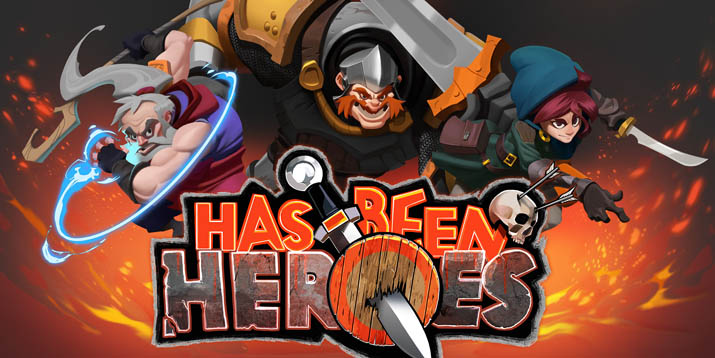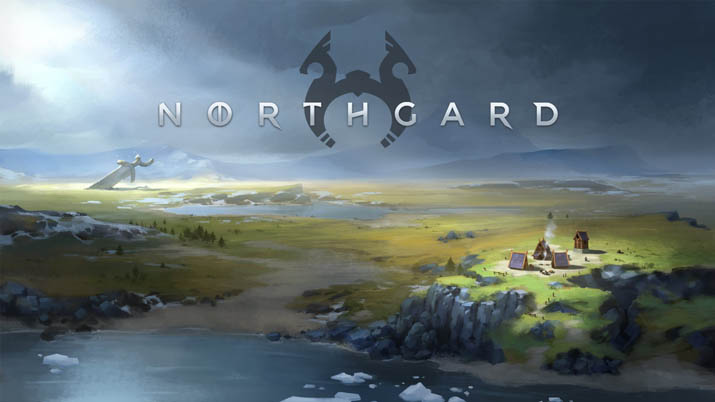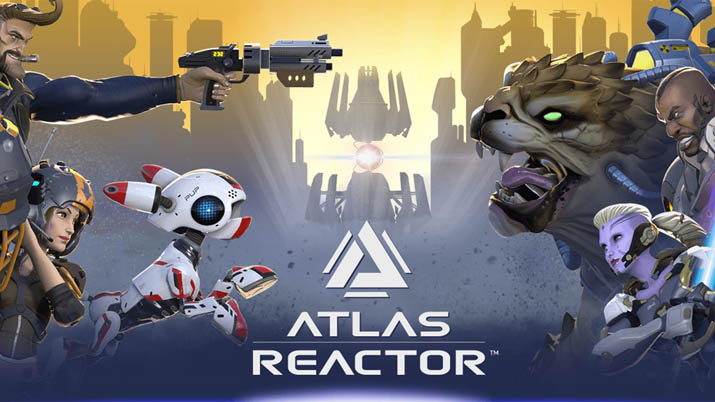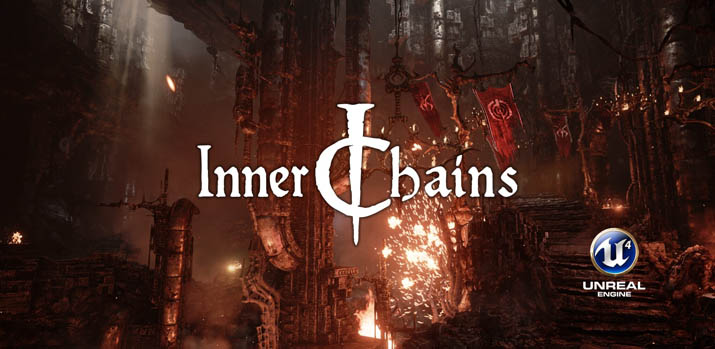As March draws to a close, so too does our coverage of PAX East. In between now and then, we’ve
- released an editorial on PAX: Day 1
- covered the creative cosplay characters at the con
- hosted wonderfully casual and thought provoking streams
- released some controversial and contentious verdicts [EN: This.] … a far cry from the red-carpet treatment of media at PAX!
Our second installment rounds out the devs we visited, and the amazing work they showed us. While Fred, Shane, and I were grabbing some captive-market-ly priced food at PAX, we overheard a group of attendees, gamers, beside us in conversation remark that the “Indie (Mega) Booth is growing” every year, it seems. Kyle (LessPvtParts) and a leather-jacket clad man – known only as Montana – echoed this sentiment over a nice, sub-zero smoke break. (As a side note, James the Enforcer (a “Redshirt”), would scoff to hear me make mention of the weather. Like many Redshirts, he was a native to Boston or thereabouts, and “snow in July” is not unheard, so I’m told.)
Attendees were a little worn going into the second full day of PAX East. The electricity lingered since Friday, but the fatigue had begun to set in: I considered myself fortunate that Saturday would be our last day of meetings. Working through Sunday, then picking up a Monday-to-Friday work week on the heels of PAX would be hellish.
But something drove these people; something drove us all. For some, it was the camaraderie of like-minded gaming enthusiasts. For others, it was the jaw-dropping visuals of the year’s most polished titles. Others still were propelled by the thought of getting to actually play games that won’t be released for months to come. And some were just in it for the pins. Watching a young girl sift through what appeared to be refuse, looking for pins, hearkened memories of Sweetruin, aka Lori “PR & Stuff <3” May, "I mean… I'm not saying that I'd rummage in a trash can for swag. But I'm also not saying that I wouldn't."
As with our previous piece, I would like to open with a brief mention of some games with smaller production value but big potential:
Enlightenment (developed by Lizard King Studio; published by Coconut Island Games), seeks to capture the feeling of “mad men going crazy in an insane asylum,” in the calm and deliberate words of Roger Lyu, Founder & Lead Designer. After an asteroid collision causing a collapse of civilization on Earth, the energy carried by meteorite made “consciousness” the new source of productivity among a total shuffle of social hierarchy.
Date or Die, by writer, narrative designer, and “full-time skeleton enthusiast” Arden Ripley, is a dating sim with seven love interests and fourteen endings that’s “sort of like Flavors of Love.” The catch? “Well, I thought of something really ridiculous, because I’m just crazy like that: what if the people who were eliminated were killed off by a villainous host?" Love it. Yes, please. What’s more, Ripley is committed to a “development process (which is) open and transparent, so you can learn along with us!” OPN can’t wait to review Date or Die once it’s released -- or the next title Ripley will concoct, for that matter!
Finally, I’d like to take a moment to give a shout-out to Jessica Darrican, of ThinkGeek, who showed us the cutest Piranha Plant you’ve ever seen, which I ended up getting for my daughter, and Michael Lamerique, a photographer who talked shop with us -- especially Shane Gamez, naturally -- while we were grabbing a quick refresher in the food court.
|
Title |
Studio |
Publisher |
| Frozenbyte | ||
| Larian Studios |
- |
|
|
- |
||
|
- |
||
|
- |
||
|
- |
||
Don’t see what you’re looking for? Check out part I of OPN’s PAX East Boston coverage.
Has Been Heroes

Has Been Heroes is a frenzied, tower-defense style runner that you can pause. Kai Tuovinen, Marketing Manager at ForzenBytes, asserts that pause will be your favorite button, because it provides the time needed to not only shuffle your characters across their lanes, but also to ponder whether you should go for the time-consuming excursion on the off chance that you’ll pick up something useful against the final boss. You can’t be too sure, however, since not only is the loot procedurally generated, the stage boss is, too -- and the paths along the way!
Once the players get the muscle memory for commands though, dexterity becomes a feat fitting for an audience. The speed running aspect is very tricky since such a large element is procedurally generated, but the game plays well at length and deliberation, letting you chew on whether you’ll try your luck with items or spells, or just force your way through, on the very real chance that those spells wouldn’t work, anyway. Want a real treat? Watch the “favorite” pause button of the developers get cast by the wayside by hardcore runners as they calculate odds and make decisions non-stop, real-time, in their heads, all while combatting the oncoming hordes. Now, I want some popcorn!
Divinity: Original Sin II

This interview is edited and condensed.
Michael Weltzer, Head of PR & Social Media at Larian Studios, couldn’t contain his excitement. Maybe part of it was the energy in the convention center, but the object of his affection was clear: Larian Studio’s most recent release, Divinity: Original Sin II.
There’s a lot to like about the title, and it’s a beauty to look at, especially at max settings. But Michael wasn’t gushing about the graphics: the depth of (multiplayer) gameplay riveted him. “I can make a Poison potion ‘look’ red (like a healing potion) and sneak it into your backpack,” Weltzer confided, devilishly, “(and if) you're sick in a battle, and you take it... then I’ve killed you!”
Now, why you would want to kill your ally? It seems fun and intriguing, but part of it feels like it’s feeding into the deepest desires of trolls the earth over. I mean, truly: what could be more fun than screwing over some guy you don’t even know. Hell, I’ve backstabbed a lackadaisical ally once or twice in my Command & Conquer / StarCraft days, that’s for sure.
“But you could secure your backpack…” Weltzer continued, ruminating on counter strategies, “but they could pickpocket your (secured) backpack, or....” and counter-counter strategies, and so on.
The subterfuge was real, but that’s only a thin slice of the types of creative and inventive toys provided to gamers by the developers at Larian. Take, for another example, the “surface attachment system.”
“(Suppose that) you are on fire,” began Weltzer, “-- but not Necro fire,” he quickly qualified. That would be a whole ’nother can of worms. “...you’re on fire, so you go into water. Well, now you are OK.” Weltzer grinned. There was always a twist. “...unless I use electricity.” Interestingly enough, amidst all the Caesarian embraces, in the end, your greatest enemy is and shall remain yourself. “(The surface attachment system) acts like a tactical resource, but as it turns out, (we find that) players mostly die from (surfaces)… of their own doing.”
If this seems like a lot to take in for a demo at an already thrilling con, Weltzer empathizes. “You have to go into (Divinity) to experience it. It's hard to describe," he said, laughing. "People here only have 15 minutes. It's impossible to get anything done in that time. I’ve played 60 hours so far and, to be honest, that's not much."
Northgard

Sebastian Vidal (CEO & Cofounder, Shiro Games) and Nicholas Canasse (Cofounder, Shiro Games) trekked from Bordeaux, France to present American gamers with a treat: Northgard, the Nordic strategy title that is inching towards two thousand “Very Positive” reviews on Steam.
The title itself play beautifully, with rich graphics atop engaging gameplay. “We tried to make the interface go away,” noted Nicholas, “so you can play with what's happening on the screen." After nearly one and a half years in development, I don’t blame them for wanting to put their game in the forefront, HUDs be damned.
And another reason, as if you needed one: the “triple-A quality artwork,” as Sebastian put it, of Northgard’s Lead Artist, Jeremy Vitry. Check out his work here and see if you don’t agree.
Ultimately, however, Northgard is a treat which strategy players must experience to appreciate. As OPN’s Chris Hubbard wrote in his Early Access review of the title:
For what Northgard sets out to do, it does well, and with the content that is soon to come, the title is promising and worth getting… especially for those who enjoy empire-building titles… For those who love the tension, suspense, and the struggle to develop the perfect strategy for a fierce and resilient empire that can dominate the world – this may be your game.
Obduction

This interview is edited and condensed.
We approached the legendary Rand Miller (Myst, Riven, and Founder of Cyan, Inc.) just before lunch. He was bespectacled, with a soft, gray-white beard and a casual, loose-fitting, button-down polo. In Cyan’s booth, a convention gamer was exploring the amazing depth and craftsmanship of the Obduction world, replete with literal sprinklings of ukiyo-e. The gamer was looking and feeling around with her virtual reality (VR) headset and controller, trying to grasp and turn a giant handwheel on a large pipe.
"All we've ever wanted to do is make you feel like you're in a world," said Rand, watching the gamer with the raw fascination becoming of a developer who truly wants nothing more than to create gaming gems. “And the beauty of touch controls in virtual reality... (is that) it's very intuitive. It feels like an extension of my real hands." It’s true: you don’t need an intro level teaching you how to move your head to look around. (Could you imagine the madness? ‘When you want to look left, look left.’)
Rand was holding his hands up now, mimicking a gamer he saw in a demo of another game. “I watched someone playing VR, and (in the game) they sort of bumped into a table.” He shot his left hand down past his waist, as if trying to snatch something. “And (the gamer) just instinctively tried to catch this thing that was dropping, to prevent it from falling.” And, with the seemingly endless creativity of the professionals in the gaming, ‘interactive-entertainment’ industry, Rand believes that VR technology and ideas for innovative, captivating gameplay with continue to improve.
The gamer successfully turned the handwheel and was now exploring the ethereal Obduction world. "In some ways,” Rand continued, thoughtfully, “it’s difficult to make a real-time 3D game, so we built in point-and-click (elements). But then, people kind of expect us to do what we do…” he conceded, before boasting, deservedly, “...and we do (our niche) well."
Cyan, Inc. chooses to retain a small team of game developers - “world designers,” as they call it - and focus on approachability , intuitiveness, and creating titles which are "unintimidating." Frederic Brizzi, OPN President and Founder, and Rand Miller enthusiast bar none, agreed with Cyan’s approach, adding, "You guys have proven (that) there's an audience for thinkers."
Nodding in agreement, Rand adjusted his glasses, and there was the slightest soupcon of exasperation. "I sometimes look at shooters and I'm jealous,” admitted Rand. “You don't have to really reinvent the gameplay.” He grimaced and opened his empty palms. “I can't reskin puzzles."
Rand smiled, though. That wasn’t what he was in for, when it came to games, anyway. Swapping lives between respawn points? Try swapping spheres between worlds. “Great, mind-blowing moment(s),” Rand mused, as we looked on at the gamer, smiling behind her VR headset, not in Boston, but in Cyan’s Obduction. “I live for these moments in game design.”
Rift

Chris Meyer, Combat Designer, joined us to discuss Rift, by Trion Worlds. This interview is edited and condensed.
"Rift is a labor of love. the developers who work on it really love what they work on, and we all really care... it's something we're really proud of" he said while gushing. His passion to the project shone through in every description of every mechanic, as if each were a special child of his. In a manner of speaking, they are.
True to his word, Meyer wasn’t the only one working on Rift with an eye for detail. “We really think about how it feels to be out in the world, organically. It took six-to-seven months of art time just to develop the environment -- with everything designed by hand.”
Meyer has been on the project for nearly one and a half years, after coming on board from his previous role, working on Cryptic, for five years. The biggest challenge, he says, is the “content scope and the balance of the game right now." The Trion team is looking for the Goldilocks zone on size-and-experience, or as Meyers so brilliantly put it, "tackling the difference between repeatable and replayable."
"(We are) much more focused on a rich wealth of content instead of just tons and tons of quests that maybe are ‘somewhat’ interesting," asserted Meyer. To achieve this goal meant not only plenty of time before the ol’ drawing board (literally, in this case), but also engaging with the community -- a refreshing and always welcome stance, when it comes to developers.
Atlas Reactor

Senior systems Designer Jeff Hamilton, joined us to discuss Atlas Reactor, by Trion Worlds. This interview is edited and condensed.
"There's no randomness in our game," said Hamilton, equal parts boasting and dry fact. Like his colleague at Trion Worlds, Hamilton’s passion was evident from the start. Indeed, it seems that over the two years of development, Atlas Reactor has undergone relatively substantial changes.
"We wanted to do something completely different," continued Hamilton. For example? How about a turn-based game that’s real-time?
"If they shoot at me and I dashed, well I'm not there anymore, so I don’t get hit." remarked Hamilton, while showing us on screen exactly what he meant. But what appeared so natural to us then wasn't always the case. "For a long time, it was (strictly) turn-based... but it just wasn't that fun…” Hamilton conceded. “Then we were like, ‘What if everyone moved all at once?' It kind of sounds crazy," he remarked, with a mischievous smirk. But the results speak for themselves: Atlas Reactor is a terribly addictive game. And that isn’t a coincidence. “(We knew that) if we could just get players to play for the first thirty minutes, they would not be able to put it down after that.”
How does the Trion team ensure that they are hitting the mark (What does “hitting the mark” look like, you might ask? How about a 9/10 on Steam with nearly four thousand reviews)? By keeping a tight team (roughly thirty people), and with daily play tests.
"I want that job," Fred told me, over his shoulder.
Inner Chains

Inner Chains is the first title from a growing team (Telepaths Tree, with less than twenty people) that’s based out of a growing country for game development (Warsaw, Poland). Game Designer Michał Szewerniak sits down for a conversation with OPNoobs’ Fred Brizzi, Shane Gamez, and Rey Urias. This interview is edited and condensed.
Fred: How would you describe the game? It seems like a ‘technical’ horror game.
A lot of people say, "Oh this is Doom, but it seems to be slower.” This is actually on purpose. We want the player to interact with the environment and appreciate the surroundings. [We want] the player to experience the game as we want to show it to them.... you are sitting alone, with your headphones on, light dimmed, and you just play the game (alone).
Fred: You want to have control over the player’s experience, such as with the checkpoint system [you cannot simply save progress whenever you like], but it also looks like you designed it for the players to explore and experiment on their own.
Yes. We want you to actually jump into a room and climb through it. When I first started working on the game and was playing through the levels, a few times I got lost (laughter). But, we really want you to get lost. You (your character) really shouldn't be where you are, so we want you to feel that lost feeling… We look for those ‘whoa, dude’ moments.
Fred: What were some of the development challenges the team faced trying to achieve this balance?
Well, we have been developing for two years, but the game that we started with is not the game we have now. Like most game developers, we are short on time. Developing games is an iterative process: you fix some bugs, and those bugs create more bugs... You need to stay focused and manage your time, or you can get stuck doing things you shouldn't be doing.
To that end, teamwork is very important. The guys we are working with are not only great professionals, but we have so much fun. I find that super refreshing. We talk about what we want to work on, and we work on it. Just before that, I came from a firm where I spent most of my week in meetings, and I was done. (But now,) I wouldn't change my job with anyone else.
Fred: A lot of studios treat Early Access as a kind of ‘security blanket,’ when it comes to development and balancing -- which it isn’t. Do you think releasing Inner Chains for Early Access could have helped?
Not really -- I don’t think so. In my personal opinion, there's no point to do Early Access, especially because it is a single player game.
Shane: Considering all the mature and graphic content in Inner Chains, how do you plan on handling console ratings, with respect to the ESRB?
We're still working on that... (ultimately,) we want the game to be as it is. We're very keen on those kinds of compromises.


